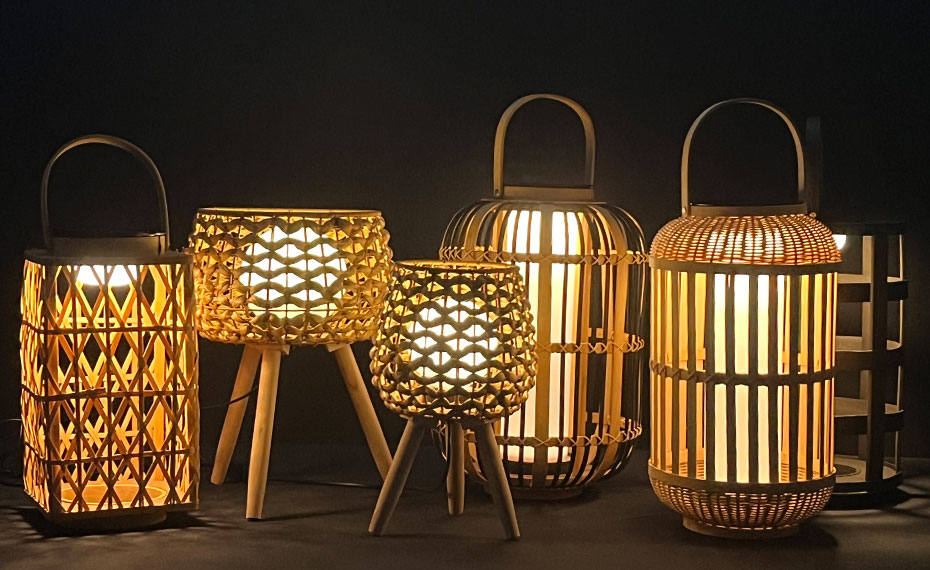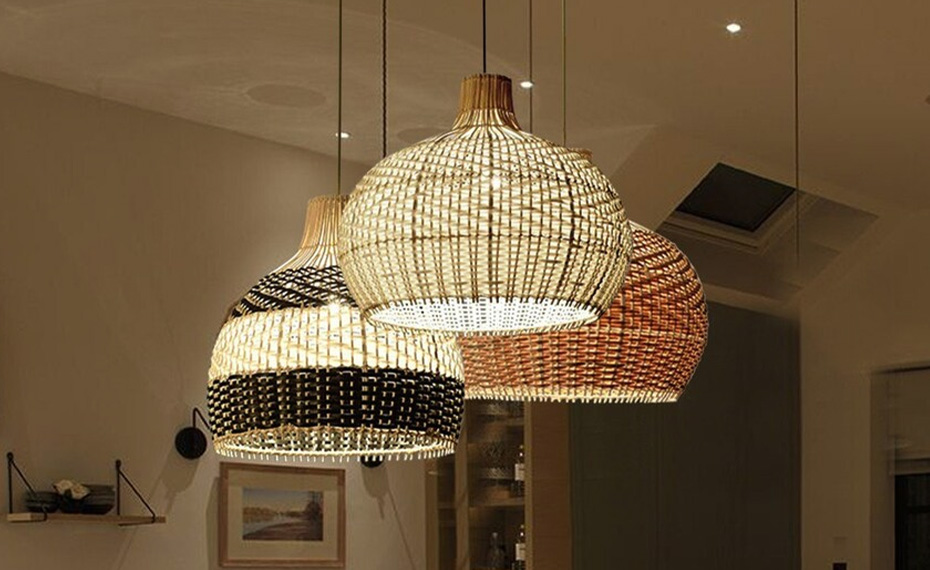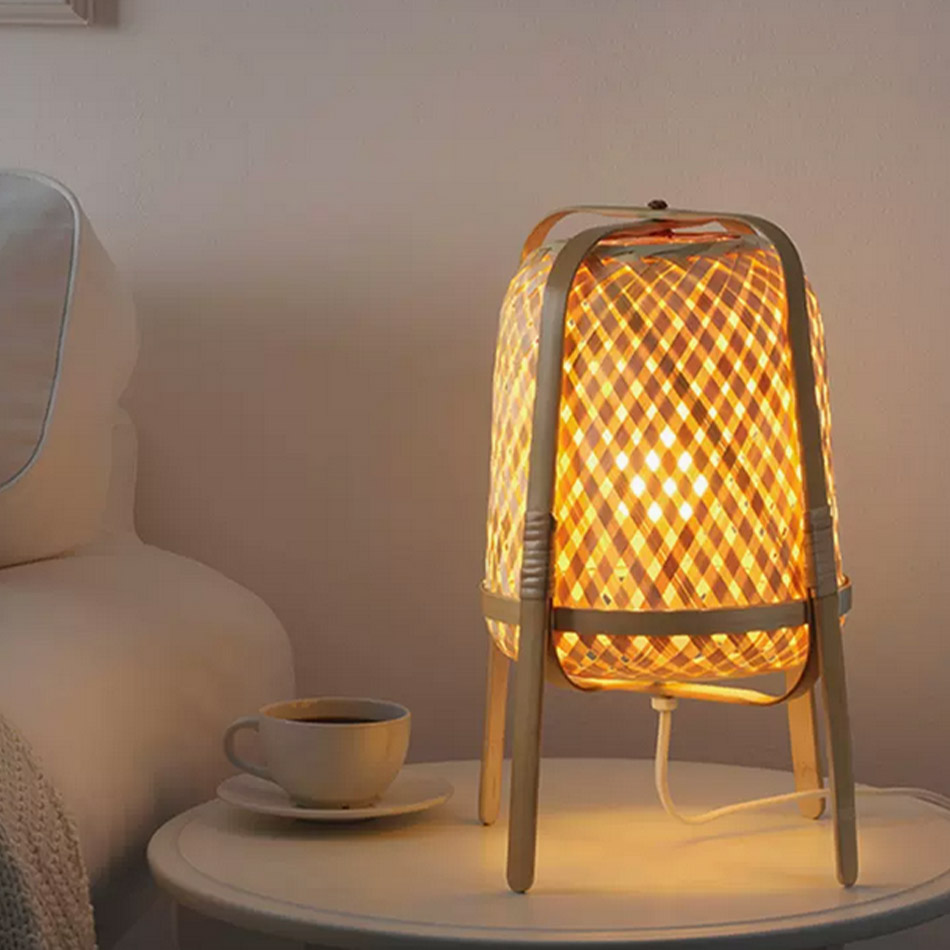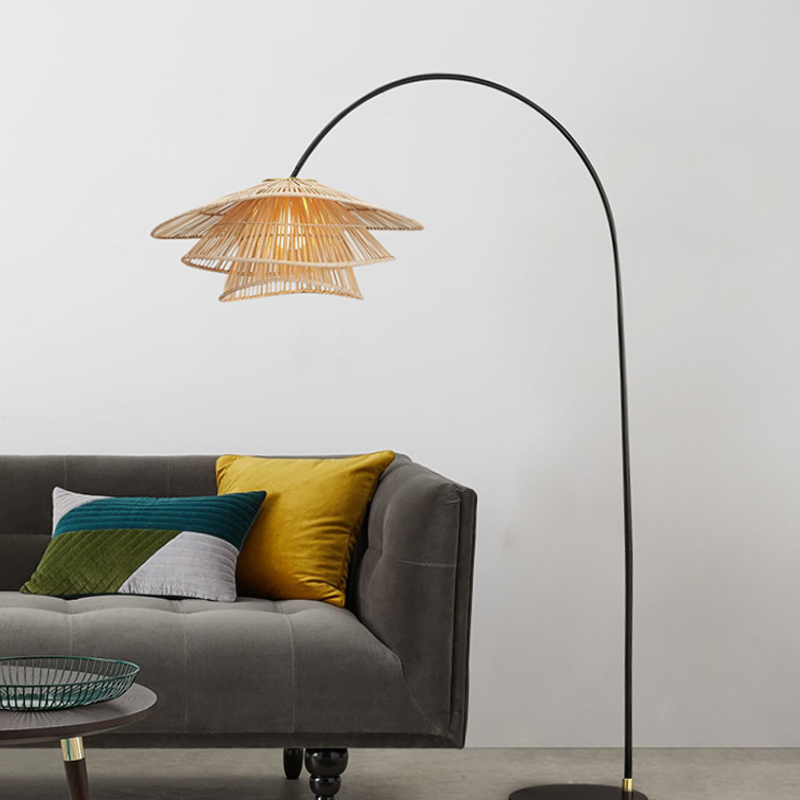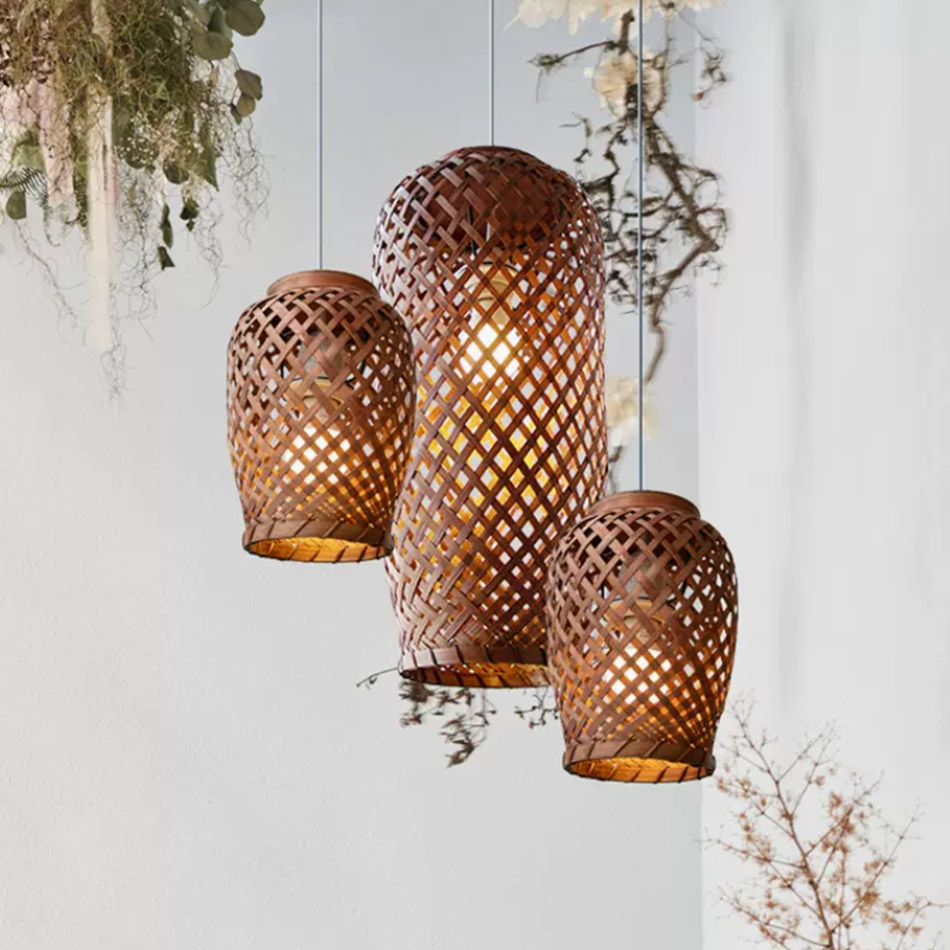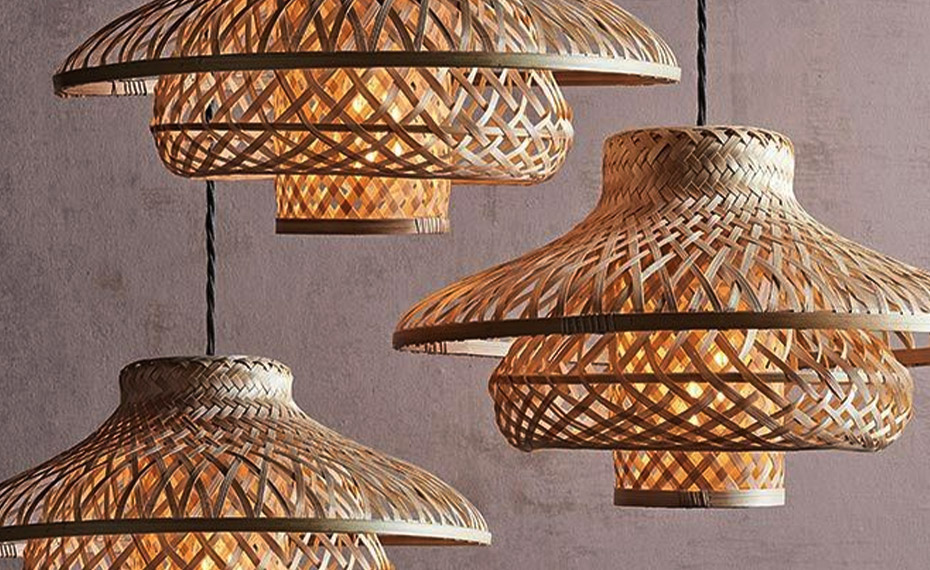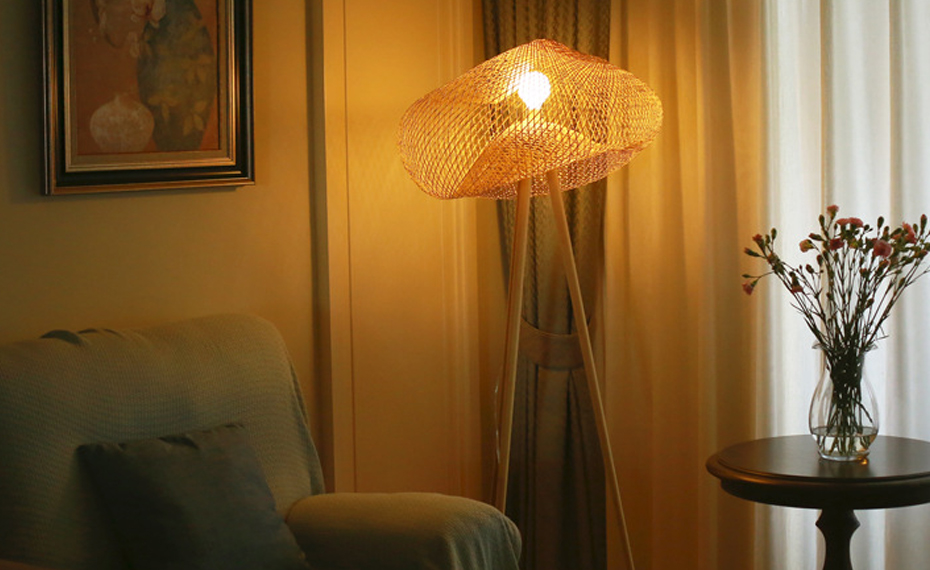In modern interior design, woven lamps, with their unique texture, warm light and shadow, and handcrafted charm, are ideal for enhancing the aesthetics of a space and adding a personalized touch. This article aims to explore how to cleverly incorporate woven lighting fixtures into modern interiors to create a living environment that is both stylish and comfortable.
In modern interior design, lamps are not only lighting tools, but also one of the key elements that enhance the aesthetics of a space and create an atmosphere. In recent years, with people's re-evaluation of natural materials and handicrafts, woven lamps have won the favor of designers and home decorators with their unique charm and warm light. These lamps are usually made of natural materials such as rattan, bamboo, hemp rope, etc., and are made through complex weaving techniques. They not only reflect the beauty of craftsmanship, but also add a warm and natural atmosphere to modern interior design. This article will explore how to incorporate woven lighting fixtures into modern interior design, making them an important element in enhancing the beauty and comfort of your home through careful selection and creative use.
Next, I will discuss the origin and evolution of woven lamps in detail. This background knowledge will help us better understand the value of woven lamps in modern design.
The origin and evolution of woven lamps
The history of woven lamps can be traced back to ancient civilizations, when people used natural materials such as rattan, bamboo and hemp rope to make daily necessities, including containers and lamps for lighting, by hand-weaving. This production method not only reflects the use of natural materials, but also demonstrates the early pursuit of aesthetics and functionality by mankind.
Over time, weaving techniques were gradually developed and perfected, and different cultures emerged with their own unique weaving styles and techniques. In Asia, bamboo woven lamps are famous for their fine craftsmanship and natural beauty; while in Africa and Latin America, people prefer to use colored hemp ropes and rattan to create woven lamps full of ethnic characteristics. These diverse weaving cultures not only enriched the design of lamps, but also provided inspiration for later modern interior designs.
In the 20th century, with the rise of modernism and minimalist design styles, woven lamps began to be reinterpreted and integrated into modern interior design. Designers began to explore how to combine traditional weaving techniques with modern design concepts to create lamp designs that have both traditional charm and modernity. For example, the use of cleaner lines and shapes, and the combination of traditional materials with modern materials such as metal and plastic, allow woven lamps to retain their natural and warm characteristics while integrating perfectly into modern interior spaces.
Today, woven lamps are not only one of the elements favored by interior designers around the world, but have also become a symbol of sustainable design and lifestyle. As consumers pay more and more attention to environmental protection and handicrafts, woven lamps have once again become an integral part of modern home design with their sustainable materials and craftsmanship, as well as their unique aesthetic value.
If You Are in Business, You May Like
Bamboo lamp production technology and process
1.1 Materials of bamboo woven lamps
The main materials required for making bamboo lanterns include:
Bamboo: The thin strands of bamboo are generally used as materials for making lampshades, they are flexible and easy to work and weave.
Lamp base: You can choose a metal or wooden lamp holder to support the entire lamp.
The tools required to make bamboo woven lamps mainly include:
Knitting needles or knitting boards, tweezers, scissors, wrenches, etc.
The supply and selection of these materials and tools will have an impact on the delivery time of bamboo woven lamps. First, the supply of materials needs to arrive in time to ensure smooth production. Secondly, choosing the right tools can improve work efficiency and quality, thereby shortening production time.
1.2 Processing process of bamboo woven lamps
The processing process of bamboo woven lamps can be divided into the following steps:
Bamboo processing: Clean and process the purchased bamboo to remove impurities and residues on the surface to ensure the quality and operability of the bamboo.
Cutting and assembly of bamboo: According to the design requirements, use a knife to cut the bamboo into the required length and shape, and then use tools such as tweezers and glue to assemble the bamboo into the frame structure of the lampshade.
Bamboo weaving: According to the design drawings or your own creativity, use tools such as knitting needles or knitting boards to weave bamboo into the mesh structure of the lampshade. This is one of the most critical steps in making bamboo woven lamps and requires patience and careful operation.
Lamp holder installation: Install the base of the lamp to the bottom of the lampshade to ensure the stability and safety of the lamp.
Installation of light bulbs and wires: Install the light bulb and bulb holder, and connect the wires and switches to ensure that the lamp can illuminate properly.
Quality inspection and adjustment: Conduct quality inspection on the finished bamboo lamps, including appearance, bulb lighting effect, circuit connection, etc. Make necessary adjustments and corrections if necessary.
Final Finishing and Cleaning: Give the bamboo woven lamp the final touches and cleaning to ensure it looks neat and tidy.
Incorporating woven light fixtures into modern interiors: a unique way to enhance the aesthetics of a space
1. Understand the charm of woven lamps
Woven lamps are usually made of natural materials such as bamboo, rattan, hemp rope, etc. These materials are not only sustainable and environmentally friendly, but also bring a warm and natural texture. Compared with cold and hard materials such as metal and glass that are common in modern interior design, the addition of woven lamps adds a touch of softness and warmth to the indoor space.
2. Choose the right type of lighting fixtures
There are many types of woven lighting fixtures, from chandeliers and wall sconces to table lamps and floor lamps, and different types of fixtures can be used to meet different lighting needs and design purposes. When choosing a woven light fixture, consider the fixture's size, shape, and how it will coordinate with other elements of the space.
Chandeliers: Ideal as a centerpiece in a living room or dining room, creating a striking visual focal point.
Wall slamps: Can be used to add a warm ambience to a hallway or bedroom.
Table lamps and floor lamps: suitable as supplementary lighting for reading or resting areas, adding a sense of depth to the space.
3. Incorporate modern interior design elements
Although woven lamps have a strong natural and handcrafted style, they can also be integrated with modern interior design elements to create a space that is both modern and warm. This can be achieved by:
Color matching: Choose modern furniture and decorations that coordinate with the material tone of the woven lamps, such as a combination of dark brown woven lamps and light wood furniture.
Material contrast: Pair woven lamps with furniture and decorations in modern materials such as metal and glass to enhance the visual interest of the space through material contrast.
Clean Lines: Choose woven light fixtures with clean lines to echo the clean aesthetics of modern interior design.
4. Create layers and atmosphere
Woven lamps are more than just lighting tools, they serve as elements that create depth and atmosphere in a space. By cleverly arranging multiple woven lamps, you can create rich visual layers and a warm and comfortable atmosphere:
Layered lighting: Use a combination of woven lighting fixtures of different heights and sizes, such as a chandelier with a table lamp, to create rich light and shadow effects.
Focus areas: By using woven light fixtures as focal lighting in an area, such as a reading nook or art display area, you can highlight the character of the space.
5. Pay attention to lighting quality
When integrating woven lamps into interior design, in addition to appearance design, you should also pay attention to the quality of the lighting. Choose lamps that provide warm, non-glaring light, and consider the distribution and intensity of the light to ensure it meets practical needs while creating a comfortable environment.
With its unique natural beauty and handcrafted charm, woven lamps provide rich decorative possibilities for modern interior design. Through the above methods, woven lamps can be cleverly integrated into modern interior design, creating a living space that is both stylish and comfortable. When selecting and arranging woven lamps, consider their coordination with other elements of the space, as well as the quality and effect of the lighting, to maximize the aesthetic and functional value of woven lamps.
Post time: Mar-22-2024





